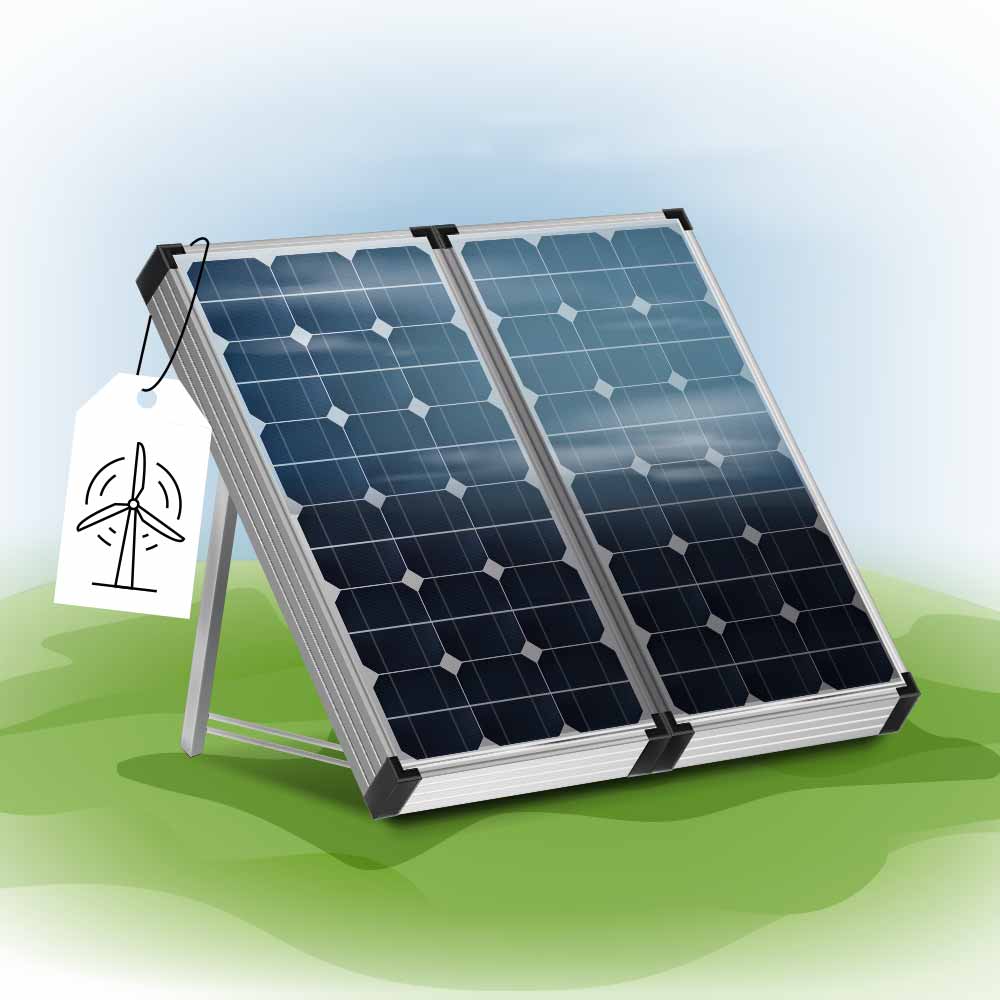Wind Turbine Blades to Be Recycled into Photovoltaic Plants

The first wind farms in countries like Spain date back to the mid-1990s. They are still fully operational, most with their original blades, which says a lot about wind energy and the durability of these infrastructures. It is estimated that between eight and ten blades are removed yearly in Spain, which is far from an environmental problem. However, the recycling possibilities offered by wind turbine blades need to be analyzed to ensure their environmental sustainability and contribution to the circular economy.
And this is not only because of the useful life of the current wind farms but also because of a term that is beginning to be used more and more frequently – repowering. In other words, replacing existing wind turbines with more efficient ones that use the available space better. Repowering 100% of wind turbines with 20 years of useful life is estimated to generate more than 29,000 tons of blades per year between 2021 and 2025. And although today’s sophisticated maintenance programs can bring the service life of wind turbines to more than 40 years, it is necessary to dispose of obsolete components within circular economy parameters. How can this be done most sustainably?
In this article, you can read about the following:
Do you like what you see? Download the PDF here
What are the elements of a wind turbine?
There are several types of wind turbine designs, but the vast majority of them, including those intended to produce offshore wind energy, share the following elements:
- Foundations, which in the case of floating offshore wind can be an anchor to the seafloor.
- Tower, which supports the wind turbine structure and is usually manufactured in the form of a steel or concrete tube.
- Rotor, which is the rotating part of the turbine and comprises the blades and the hub, i.e. the central piece that connects them.
- Nacelle, which is the heart of the wind turbine and houses the equipment that converts kinetic energy into electricity.
Approximately 90% of the mass of a wind turbine is easily recyclable. The tower and rotor, being mainly metal, although there are also concrete towers, are relatively easy to recycle, so the focus is on recycling wind turbine blades, which use composite materials such as fiberglass and resins.
What techniques exist for the recycling of wind turbine blades?
At present, various techniques are being studied for the recycling of these wind turbine parts. Basically, the following options exist:
- Mechanical, with processes such as grinding or micronization, which reduce the materials to powder or scraps.
- Thermal, with processes such as pyrolysis or gasification that use high temperatures to obtain industrially usable raw materials.
- Chemical, with processes such as solvolysis that separate functional components using solvents such as water, alcohol, or acids.
Of course, the goal is to use recycling solutions that are not energy-intensive and non-polluting. In this sense, it is necessary to use renewable energy in the process and to avoid the emission of greenhouse gases or toxic chemicals.

From wind to the sun: the journey of a wind turbine blade
The challenge in recycling wind turbine blades is to develop solutions that enable the transition to a circular economy in large-scale industrial processes. In other words, solutions that are both ecologically sustainable and economically viable. One of the most promising projects in this respect has been carried out at Badajoz’s Extremadura I-II-III photovoltaic complex.
The initial raw material came from two out-of-service wind turbine blades to which a micronizing process was applied. Subsequently, the material was shaped utilizing a technique called pultrusion. But what exactly are these two techniques?
Micronizing is a pioneering technique in the blade recycling sector, which consists of reducing the size of the glass fiber to microns, mainly through mechanical transformation techniques. The resulting powder obtained is very versatile and is used as raw material of recycled origin to manufacture new products. Subsequently, through the continuous pultrusion process – from “pull” – the fiberglass powder is combined as a filler with the resin and the continuous fiberglass reinforcement. After being heated in a mold, a profile with the desired geometry and length is obtained.
The micronized powder has been used to create four beams to replace the galvanized supports that support the photovoltaic panels of the Extremadura solar plant. In other words, a zero-waste approach that also uses the raw material to continue generating renewable energy. You can check out the whole journey in the video below:
Repurposing of wind turbine blades: other applications
In addition to a second life in a solar plant, there are other wind turbine blade recycling experiences worldwide. Some are based on processing the components, while others resort to cutting out segments to repurpose them. Here are some of the more exciting applications we have seen with the latter approach:
- Use in the columns of electric car charging stations
- Street furniture such as fences, playgrounds, benches, or acoustic panels
- Construction of footbridges and bridges, such as the Blade Bridge in Ireland.
- Bicycle parking shelters, as in Denmark
- High voltage towers
In addition to specific materials such as wind turbine blades or construction materials, recycling is generally undergoing a real revolution, thanks to artificial intelligence and robotics. If you want to learn more about the future of recycling, you can read this article on some of the most innovative technologies in this field.

